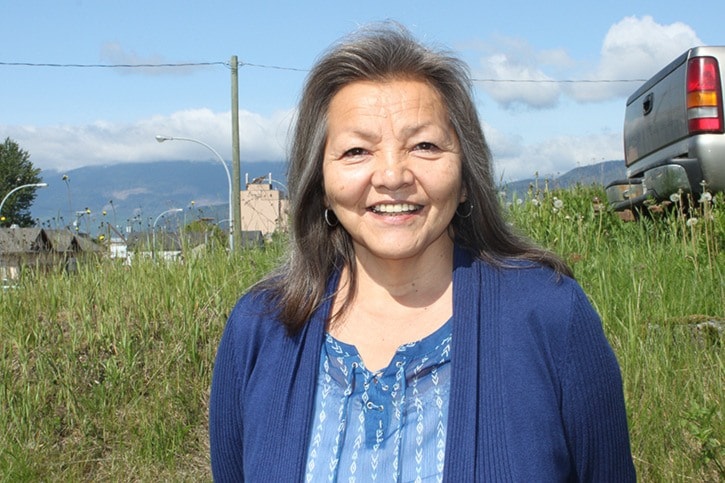When trappers from tribal chief Liz Logan’s community in Fort Nelson venture through their northeastern B.C. traditional territory these days they bring along bottled water to drink because they don’t trust the purity in the rivers flowing through an area experiencing the rapid impacts of natural gas extraction and other industries.
While a preference for bottled water over creek and river water may not strike one as odd, it is significant for a First Nation which has adapted to the local environment over many centuries.
The mission of Cree-Dene elders to enhance environmental oversight in northeastern B.C. and slow down development prompted a northwest tour by Logan of the Treaty 8 Association, named after one of the land claims treaties signed in the late 1880s.
“Gas doesn’t just appear in the pipe, it’s got to come from somewhere and it’s impacting somebody somewhere,” said Logan who spoke in Terrace at the Elephant’s Ear late last month.
To illustrate these impacts during her talks she uses photos and videos and first hand accounts.
“The elders are saying there is something wrong with the water, something wrong with the animals. We need a cumulative impact assessment done before more development proceeds,” said Logan.
The Fort Nelson region is located within the Horn River shale basin rich with gas deposits, and is central to B.C.’s plan to expand extraction facilities and pump gas by pipeline to the coast where it will be shipped in liquefied form overseas.
Logan said people within the boundaries of Treaty 8 are the eyes and ears of the land and keep an eye on what industry is doing.
“Compliance and enforcement in the oil field isn’t adequate. A lot of our people are the ones seeing the infractions, and we report it back to our nation who then reports it to he oil and gas commission,” she said.
Some of the main concerns surround wildlife grazing near gas sites where flared material has collected on the ground or near sump pits, as well as the widespread use of pesticides along right-of-ways and burning timber when clearing them instead of sending it to market. She said that an independent study her band commissioned for the area confirmed their fears about the high levels of toxic material in the forests.
At her presentation she showed aerial video of the gas wells in the basin, saying the thousands of wells in the region now will grow immensely to meet gas demands.
Logan is promoting a letter-writing campaign to convince the provincial government to respond to concerns. Various rules such as putting better fencing around contaminated areas is one measure she is promoting.
She said she is worried about the cumulative effects of forestry, mines, the proposed Site C dam and all the others is having.
Logan does acknowledge the benefits a gas industry can bring.
“I will not deny that there are job opportunities,” said Logan.
“But locals a lot of the time just get the scrap jobs because they bring in their own little boy’s club who they are used to working with,” she said. “There are a lot of Albertans in our territory, there are no careers usually for our people, although there is no lack of jobs in the oil patch.”
